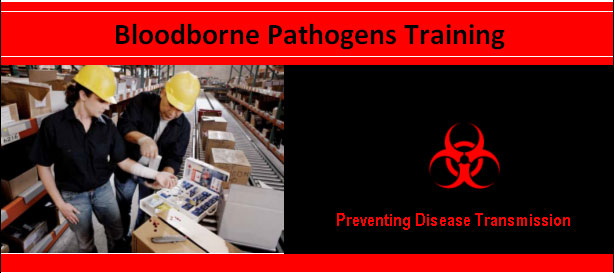
[cs_section id="" class=" " style="margin: 0px; padding: 45px 0px; " visibility="" parallax="false"][cs_row id="" class=" " style="margin: 0px auto; padding: 0px; " visibility="" inner_container="true" marginless_columns="false" bg_color=""][cs_column id="" class="" style="padding: 0px; " bg_color="" fade="false" fade_animation="in" fade_animation_offset="45px" fade_duration="750" type="1/1"][cs_text id="" class="" style="" text_align=""]If you and your employees are exposed to blood or blood products or other potentially infectious materials (OPIM) s at your workplace including bodily fluids such as saliva, then you are all at risk for contracting several dangerous and life-threatening illnesses. (See the full list of OPIMs here.)[/cs_text][cs_text id="" class="" style="" text_align=""]Hepatitis B (HBV), Hepatitis C (HCV) and human immunodeficiency virus (HIV), the vius that causes AIDS) are the worst pathogens that can be transmitted from one person to the next through exposure to the infected person’s blood or bodily fluids. We are all familiar with the suffering and death caused by the AIDS virus and Hepatitis B and C are bad players as well. According to the World Health Organization, Hepatitis “Types B and C lead to chronic disease in hundreds of millions of people and, together, are the most common cause of liver cirrhosis and cancer.” (1)[/cs_text][x_blockquote cite="Mr. WordPress" type="left"]People that work in many different fields such as healthcare, first aid responders, housekeeping, Nurses, tattoo artists and body pierces, may be at risk to bloodborne pathogens through needle sticks and other sharp objects that can lead to contamination[/x_blockquote][cs_text id="" class="" style="" text_align=""]The Occupational Safety and Health Administration (OSHA) experts develop and publish written requirements for employers that are designed to protect you and your employees from these diseases. (29 CFR 1910.1030).[/cs_text][cs_text id="" class="" style="" text_align=""]If this full list of standards as outlined on the US Department of Labor website seems a bit overwhelming at first, you can begin your program research with this two-page OSHA Fact Sheet on bloodborne pathogen programs. It gives you a high level overview of the standards and how you can institute them for your workplace program. Taking all the safety precautions necessary doesn’t’ have to be an overwhelming task. There are many additional support services available for free or for very low cost.[/cs_text][cs_text id="" class="" style="" text_align=""]Starting with your local OSHA office is usually another initial best first step to take. You can find OSHA offices by state on the web or call 1-800-321-OSHA (6742). Even small business owners can call and ask for a free onsite OSHA consultation to determine whether or not they are required to have a plan in place.[/cs_text][cs_text id="" class="" style="" text_align=""]Another excellent resource to locate in your community is the certified bloodborne pathogen training centers. For example, The Beating Heart Center provides Bloodborne Pathogens (BBP) certification course in the San Diego area for just $40 per person per class.[/cs_text][cs_text id="" class="" style="" text_align=""]The course is delivered almost completely on line and satisfies the requirements of the US Department of Labor, OSHA Bloodborne Pathogens Standards. It is designed for any individual, employee or employee group that has a reasonable anticipation of contact with blood or OPIM in their jobs.[/cs_text][cs_text id="" class="" style="" text_align=""]Spending a few hours instituting Bloodborne pathogen plans and training for you and your staff can save a life-time of suffering and prevent early death. You can start today by taking advantage of the free and low-cost support services available to help you prevent further spread of these deadly diseases in your workplace and community.[/cs_text][cs_text id="" class="" style="" text_align=""]
[/cs_text][/cs_column][/cs_row][/cs_section]